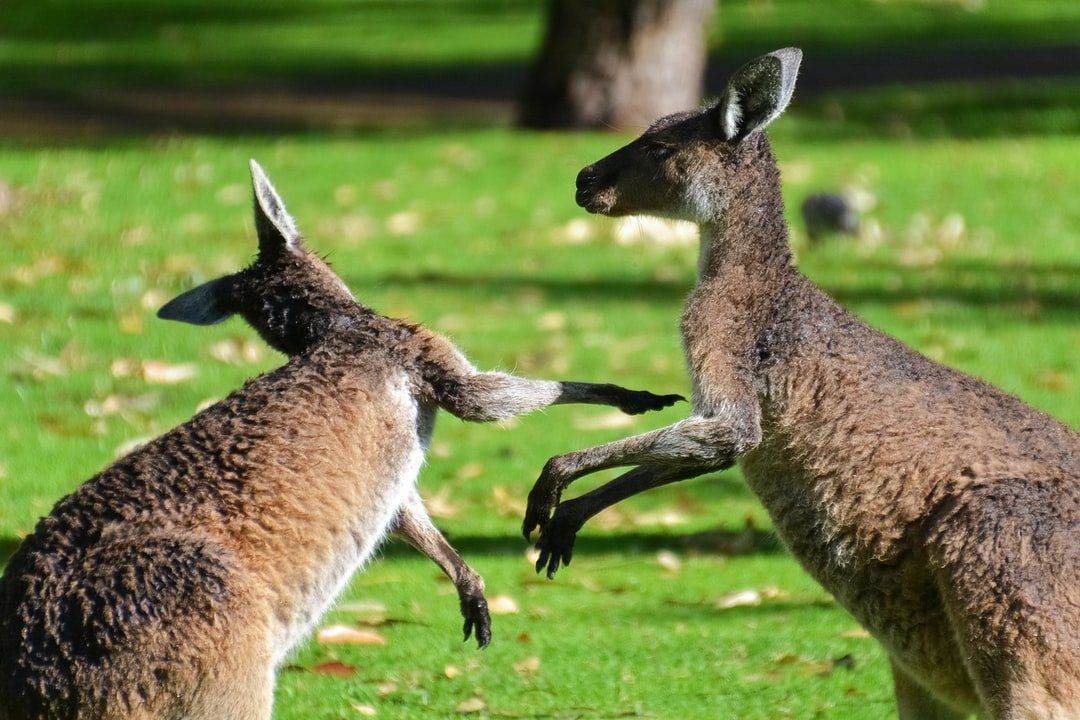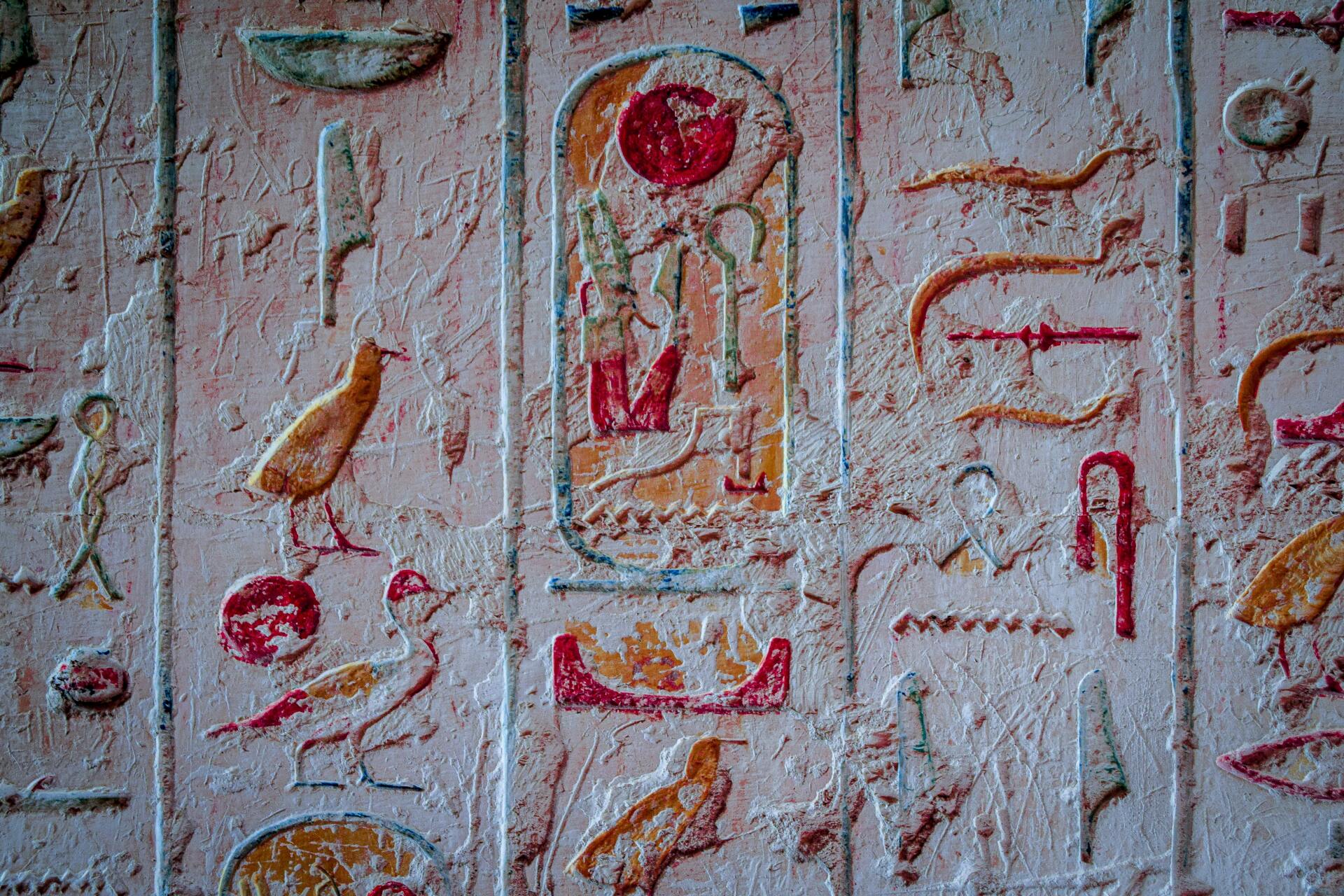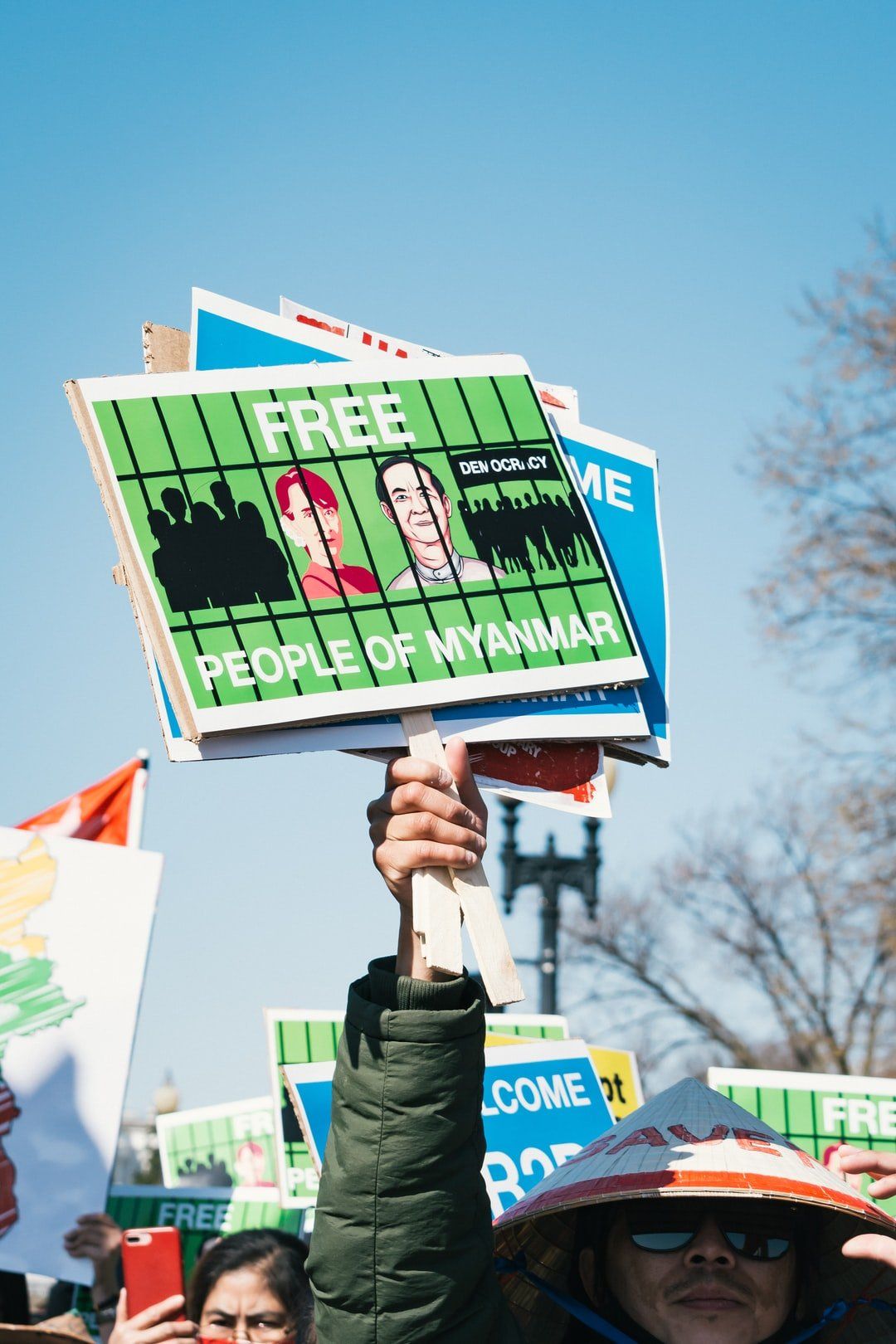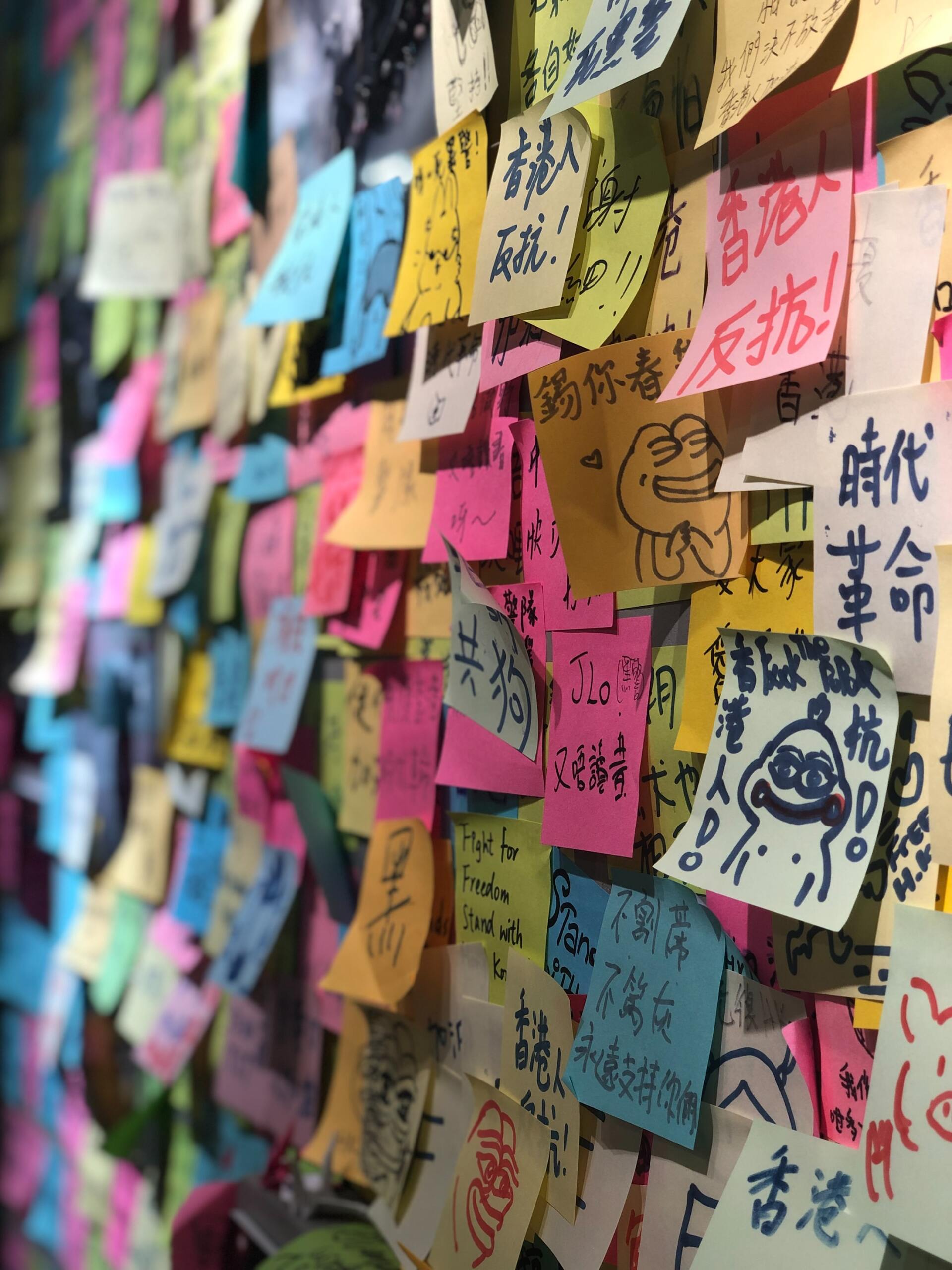INTELLECTUAL CREATION
Hacking Creativity – Authorship in the Digital Age
AI systems can produce literary and artistic works autonomously. This capacity raises major policy questions for the copyright system, which has always been intimately associated with the human creative spirit and with respect and reward for the expression of human creativity. The policy positions adopted in relation to the attribution of copyright to AI-generated works will go to the heart of the social purpose for which the copyright system exists.
By Irina Buzu
April 28, 2021
Shakuro
Keywords: artificial intelligence, creativity, copyright
As Artificial Intelligence (AI) seems to be gaining more ground on the human agenda day by day, it becomes increasingly difficult to ignore the implications of smart, fast and efficient algorithms being integrated in nearly every aspect of the new reality.
The narrative of the human-machine competition has been part of the conversation about technology ever since the first machines were created. The flashy head-line terminology might vary over time, but the main idea that keeps being stressed remains unchanged: humans are losing the race against machines, or that they are becoming irrelevant, redundant and replaced by intelligent machines.
This human versus machine narrative climbed the first step on the proverbial prominence ladder during the 18th and 19th centuries, when the steam engine and the mechanised automation of agriculture and manufacturing was scaled. The narrative became more ominous, when more intelligent and precise machines began to threaten the jobs of humans with more powerful social and political representation, during the robotics revolution of the 1960s-70s. The next technological missile hit the jobs of the service and support industries, as part of the information revolution.
Now we have reached the next, but hardly the last, chapter in the human-machine competition, as intelligent machines have now set their ‘sight’ on after the class of people who write articles about them. This article addresses the question of copyrightability of artworks generated by AI machines, in the light of the shift from a human-machine competition, towards a human-machine collaboration.
Introduction
The first references on automated artists go as far back as the 1970s, when the painter and the University of California professor Harold Cohen has been collaborating with ‘AARON’, a program capable of autonomously making pictures . The next grand artistic leap triggered by machine learning and deep learning, materialised in 2013 with ‘The Painting Fool’, the brainchild of Simon Colton, professor of computational creativity at Goldsmiths College, London. Colton redefined the ‘Turing Test’, by suggesting that artificially intelligent artists need to behave in skilful, appreciative and imaginative ways in order to be convincing enough so as to pass as humans. Ever since that tipping point, humanity has faced numerous artistic AI advancements.
In 2015, Google’s Brain AI team unveiled ‘Deep Dream’, a program that has coined a new form of art called ‘Inceptionism’, named after the Inception algorithm. Following a training in identifying objects from visual clues and being fed photographs of skies and random-shaped objects, the program began generating digital images suggesting the combined imaginations of Walt Disney and Peter Bruegel the Elder.
In 2016, a joint initiative by museums and researchers from the Netherlands uncovered a portrait called ‘The New Rembrandt’, a new art piece generated by a machine that had analysed thousands of artworks of the 17th century Dutch painter, Rembrandt van Rijn.
A similar challenge was taken on by a Paris-based artist collective in 2018, called ‘Obvious’, who wondered whether an AI machine could generate the next original Picasso masterpiece and pass it as man-made. When it went under the hammer in the Prints & Multiples sale at Christie’s in October 2018, ‘Portrait of Edmond Belamy’ sold for an incredible $432,500, thus marking the arrival of AI art on the world auction stage.
In 2019, the world saw the announcement of ‘Ai.Da’, the first ultra-realistic drawing robot artist, whose mechanical abilities, combined with AI-based algorithms, allow her to draw, paint and even sculpt. One of Google’s latest art projects, ‘PoemPortraits’, takes a word of your suggestion and generates a unique poem (to which you can also add a selfie) using an algorithm trained via deep learning neural networks trained on 20 million words out of 19th century poetry. The ‘AIVA’ music engine generates soundtracks for games, commercials, and movies, that are indistinguishable from those created by the most talented human composers .
In the meantime, AI machines have taken over various other creative endeavours, from writing articles and digests to almost winning a Japanese literary essay competition; from ‘automated journalism’ to legal paperwork and contracts; from architectural blueprints to object and process design optimisation; just to name a few.
To drive this point home, G. Kasparov stressed that: ‘AI products tend to evolve from laughably weak to interesting but feeble, then to artificial but useful, and finally to transcendent and superior to human. There is always a tipping point at which they go from amusing diversions to essential tools’ [Kasparov, G & Greengard, M 2017, Deep Thinking. Where machine intelligence ends and human creativity begins. Public Affairs, New York, p.51].
Simply put, in the past half-century, machines have become increasingly good at emulating humans and laying siege to what has been a strictly human outpost: intellectual creativity.
(Re)defining creativity
The creative Anthropocene
Creativity has always been regarded as one of the main pillars of the anthropocentric doctrine. What else is there, besides language, values, emotions and sensations, to the equation of what makes us human, if not creativity?
Edward O. Wilson’s statement comes to mind, when he addressed creativity as the ‘unique and defining trait of our species’, continuing on to call it ‘the innate quest for originality’ [Wilson, E O 2017, The origins of creativity. Penguin Books, Great Britain, p.3]. In fact, whenever we browse through the myriad of names and faces who have written either pages or books or volumes of our cultural evolution, from Einstein and Tesla, to Bach, van Gogh, Shakespeare, Gaudi, Tornatore, and the goes on, the most common attributes that come to mind are visionary, inventor, pioneer, insightful, creative. But what is creativity, really? Why were certain ideas deemed to be creative and innovative, while others were lost as mediocre and nonconsequential in the whirlpool of time?
Leading researchers in the field, such as M. Stein, M. Csikszentmihalyi, T. Amabile, D. W. MacKinnon, H. Simon, and others have been tackling these issues for decades. They have approached them from psychological perspectives, to experimental, to economic and political. The common ground is that there is no universally accepted definition of creativity, nor is there a clear recipe or list of attributes that a creative individual must possess. In fact, the current consensus is that creativity results from the interaction of a system composed of three elements: (1) a culture that contains symbolic rules; (2) a person who brings novelty into the symbolic domain, and (3) a field of experts who recognize and validate the innovation.
Da Vinci or Elon Musk’s discoveries would be inconceivable without the prior knowledge, without the intellectual and social network that stimulated their thinking, and without the social mechanisms that recognized and spread their innovations.
To elaborate a bit further on the first two elements, one would agree with the words of F. Offner, a scientist and inventor, who stressed that: ‘The important thing is that you must have a good, a very solid grounding in the physical sciences, before you can make any progress in understanding’ [Csikszentmihalyi, M 1997, Creativity. The psychology of discovery and invention. Harper Perennial, New York, p.47]. The same conclusions are voiced in every other discipline. Artists agree that a painter cannot make creative contributions without looking, and looking, and looking at previous art, and without knowing what other artists and critics consider good and bad art. Writers say that you have to read, and read, and read some more, and know what the critics’ criteria for good writing are, before you can write creatively yourself.
On account of the third element, M. Csikszentmihalyi argues that by creativity we mean ‘an idea or action that is new and available’ [Csikszentmihalyi, M 1997, Creativity. The psychology of discovery and invention. Harper Perennial, New York, p.23]. However, if we follow this account, then we cannot simply accept a person’s own perception as the criterion for its existence. There is no way to know whether a thought is new except with reference to some standards, and there is no way to tell whether it is valuable until it passes social evaluation. Therefore, creativity does not happen inside people’s heads, but in interaction between a person’s thoughts and a sociocultural context. It is a systemic rather than an individual phenomenon.
It is also M. Csikszentmihalyi who points out that if there was one word that would distinguish creative people, one word that could express what makes their personalities different from others, it would be complexity [Csikszentmihalyi, M 1997, Creativity. The psychology of discovery and invention. Harper Perennial, New York, p.57]. By this he means that they show tendencies of thought and action that in most people are segregated. They contain contradictory extremes; instead of being an ‘individual’, each of them is a ‘multitude’. Like the colour white that includes all the hues of the spectrum, creative people tend to bring together the entire range of human possibilities within themselves.
Following this line of reasoning, it would be reasonable to assume that, given the complexity and unpredictability of the creative process, algorithms (no matter how complex and intelligent) would not be capable of mimicking human creativity. And yet, the current state of affairs proves otherwise. It would seem like a Moravec’s paradox, if not for two elements that are part of today’s status quo, which lacked in the times of Edison or Shakespeare: big data and enormous amounts of computational power.
Under usual circumstances, in order to gain enough knowledge and insight into any given field or symbolic domain, one has to spend countless hours learning, consuming and processing information. In the case of human creators, this endeavour could take an entire lifetime, and even then, there are a set of barriers that hinder the complete understanding of a domain.
The first and foremost is that human creators are, well, human, and as living beings their brain capacity, energy flow and attention span are limited by certain obstacles typical to humans. M. Csikszentmihalyi digests them down to the following few: ‘Some of us are exhausted by too many demands, and so have trouble getting hold of and activating ourpsychic energy in the first place. Or we get easily distracted and have trouble learning how to protect and channel whatever energy we have.
The next problem is laziness, or lacking discipline for controlling the flow of energy. And finally, the last obstacle is not knowing what to do with the energy one has’ [Csikszentmihalyi, M 1997, Creativity. The psychology of discovery and invention. Harper Perennial, New York, p.344].
In addition to these, nowadays, with the incredibly huge amounts of data flows, fast paced work environments and increasing demands, professionals are indirectly encouraged to become better versions of themselves, on a daily basis, but only in a very narrow specialisation of the symbolic domain. The trouble with this is that most creative achievements depend on making connections among disparate domains. The more obscure and separate knowledge becomes, the fewer the chances that creativity can reveal itself.
Outsourcing creativity
In his book Homo Deus, Yuval Noah Harari offers a very interesting perspective to the anthropocentric attributes, put forward in the beginning of this section, zooming in on them through an algorithmic lens. He argues that algorithms are ‘the single most important concept in our world’, and stresses the importance of understanding how algorithms are connected with emotions and that emotions are nothing but ‘biochemical algorithms’, and as such the humans are controlled by algorithms that ‘can work through sensations, emotions and thoughts’ [Harari, Y N 2015, Homo Deus. A brief history of tomorrow. Harvil Secker, Great Brintain, p.97]. To some extent, following a Darwinian approach, this could translate into the fact that natural selection has programmed every bit of human biology, and with that, every bit that makes us human. And if so, if humans ‘powered’ by biochemical algorithms can be creative, why can’t algorithmic driven machines be creative as well?
Algorithms and intelligent machines don’t have to overcome the obstacles faced by human creators. They are not hindered by human shortcomings and due to enormous computational power, they have no trouble processing vast amounts of data efficiently and fast. Then, being proficient in pattern recognition, and as they filter, predict, collect, evaluate and learn, they can easily build a puzzle made of inter-sectorial blocks of information coming from different symbolic domains, and thus, they manage to derive original solutions to pre-existing domain specific problems, which is a creative endeavour as such. In addition to this, the promise of the information technology revolution and computer literacy have proved, to a large extent, to be counter-productive in terms of human creativity. A vast majority of people rely nowadays on various digital tools and assistants to provide answers, search for information and offer advice, thus involuntarily outsourcing certain peripheral cognitive functions, without realising the long-term implications of their actions. This view echoes a 2007 article in the Wired by C. Thompson, which incited a follow-up reaction from the New York Times columnist D. Brooks, who argued that: ‘I had thought that the magic of the information age was that it allowed us to know more, but then I realized that the magic of the information age is that it allowed us to know less.’ Continuing, ‘You may wonder if in the process of outsourcing my thinking I am losing my individuality. Not so much. It’s merely my autonomy that I’m losing.’
It is worth noting that in fact, each of us carries a device such as a phone or a tablet that can make you an instant expert on anything, thanks to Google and Wikipedia. These devices have nowadays become extensions of our arms and owning them can sometimes be incredibly useful. Doing so doesn’t make us any less intelligent than using encyclopedias, phone books or, once upon a time, the help of librarians. It is only the next stage of how our technology allows us to create and to interact with more information faster and faster – and it won’t be the last stage. The danger isn’t intellectual stagnation or an addiction to instant fact-finding missions. The real risk is substituting superficial knowledge for the type of understanding and insight that is required to create new things.
It all comes down to human-machine collaboration. It can help us be more creative, or less, depending on how we use our digital tools. Unfortunately, computer literacy is more a question of consumer information rather than knowing how to generate or use the information acquired. If necessity is the mother of innovation, secure affluence seems to be its dysfunctional stepparent. A similar perspective is given by the world chess champion G. Kasparov, who notes that while using your phone isn’t cheating in real life, you might however develop a cognitive limp from an overreliance on a digital crutch. He continues to stress that if we only rely on our machines to show us how to be good imitators, we will never take the next step to becoming creative innovators [Kasparov, G & Greengard, M 2017, Deep Thinking. Where machine intelligence ends and human creativity begins. Public Affairs, New York, p.229]. Similarly to our bodies, our brains need exercise and constant training by performing demanding and challenging cognitive tasks, in order to excel and reach that proverbial ‘Aha!’ insightful spark.
Unfortunately, partly relinquishing our cognitive autonomy to intelligent machines proves to be far easier than getting it back, which is why, while humanity hits the brakes and enjoys the cognitive ride, algorithms and AI machines are fast-forwarding at incredible speed towards becoming a new source of creativity, blurring the lines between art and technology. Humanity is therefore arguably at a tipping point when neither renouncing digital tools in particular, nor denying the digitalisation and automation more generally, is possible. Some have a utopian while others a dystopian vision of the fully automated AI future we are heading into at rapidly increasing speed. Under these circumstances, each of us has a choice to make: to embrace these new challenges, or to resist them. Will we help shape the future and set the terms of our relationship with algorithms and intelligent machines, or do we let them to be forced on us?
Regulating Creativity 3.0
We have previously argued that AI has arisen in the realm of creativity and innovation and is expected to become an integrated part of daily life in the near future. New AI technologies present exciting opportunities for developments in the creative arts, entertainment industries, as well as life enhancing inventions.
Intellectual property (IP) has always had a symbiotic relationship with the development of new technology and in turn policy has needed to adapt to keep pace with the technology and cultural changes. AI technology has the potential to shake up the IP system, raising fundamental questions from originality to authorship to ownership and infringement.
There is a current ongoing debate on whether policymakers should create a new sui generis regime extension to the existing copyright framework, which would be applicable to the new 3A era of advanced, automated, autonomous AI systems. The argument of whether to afford copyright protection to AI systems and the creative AI generated output is, in fact, part of a larger, more controversial debate on whether AI should be granted legal personality. This was initially proposed, albeit with limited effects, by the European Parliament in its Resolution of 16 February 2017 with recommendations to the Commission on Civil Law Rules on Robotics through the concept of electronic personality.
So far, national and regional legislations do not acknowledge the AI systems can hold rights or be subject to obligations similarly to a natural person or legal entity, as this rests on profound ethical implications and consideration should be given to the possible impactful ramifications. At the same time, some have also voiced opinions that any attempt to articulate an IP framework around AI is premature at best, if not flawed altogether. There is a pressing need for AI to be understood and defined first, then (if necessary) regulated. In this line of reasoning, it also remains unclear whether copyright is the appropriate, let alone ideal, vehicle for regulating AI, as it is fundamentally centered on human creativity.
We believe that an appropriate analysis of these issues needs to follow a few considerations. Firstly, one needs to distinguish between the two branches of AI, the so-called ‘strong AI’ and ‘weak AI’. Strong AI refers to a computer system that broadly approximates the mental and cognitive capabilities of human beings, whereas weak AI refers to a computer system that provides solutions to well-defined problems arrived at by specific applications.
Ultimately, the purpose of weak AI is to automate tasks that traditionally required time intensive mental activity or effort by a human, such as engaging in classification, identification of similarities, pattern recognition, etc.
It is currently agreed that strong AI is still a yet unrealised technology. Although there is some dispute as to whether it can be achieved at all, there seems to be agreement that at least it will not be realised in the foreseeable future. Therefore, an AI system that truly conceives autonomous creations without any level of human supervision, contribution or intervention requires strong AI technology. The question therefore is whether copyright protection should be assigned for AI generated works, as these may be presently achieved only by currently deployed (still) weak AI technology. To further clarify, we shall refer to some of the examples of AI technology mentioned previously.
In the publishing industry, weak AI technology such as template text generators are used, based on pattern recognition and the use and evaluation of existing text modules. For example, ‘QualiFiction’ is a weak AI that has been testing manuscripts for their potential for success by comparing them with existing bestsellers.
However, the bestseller formula has yet to be found, as it is hugely dependent on human subjective apprehension, as opposed to algorithmic mathematical calculation. Text generators and automated journalism, such as the weak AI technology of the company ‘uNaice’, are used to generate short texts of products on online shop pages, but they hardly pass the threshold of creativity. In China, bots compile text collections from Wikipedia entries, but they cannot decide what is good or bad, true or false; weak AI recognises patterns and assembles text modules on the basis of probability.
Similarly, translation programs learn faster, but their word-for-word translation takes no account of allusions, metaphors, irony, the nuances of synonyms or sentence rhythm, despite employing deep learning algorithms; they still require an editorial and linguistic like narrative intensive revision, usually performed by a human.
Likewise, ‘Sunspring’ claims to be the first ever screenplay written entirely by an AI machine, but of course it required a human to develop the software and to collate and input the hundreds of screenplays used as the dataset. The previously mentioned famous AI portrait of Edmond Belamy signed as authored by an algorithm, sold for $432,500. The work was created by Obvious, a Paris-based collective consisting of Hugo Caselles-Dupré, Pierre Fautrel and Gauthier Vernier by way of what they call ‘GAN: Generative Adversarial Network’. The algorithm consists of two parts; the Generator and the Discriminator. Caselles-Dupré, Fautrel and Vernier input a data set of 15.000 portraits, the Generator makes a new image based on the data set and the Discriminator tries to spot the difference between a human-made image and one created by the Generator.
Nonetheless, in an unprecedented turn of events, in January 2020, a Chinese court assigned copyright to an AI, Tencent’s ‘Dreamwriter’, which has been producing articles for some years. The court found that the article’s articulation and expression had a ‘certain originality’ and met the legal requirements to be classed as a written work — thus it qualified for copyright protection and awarded copyright ownership to Tencent for all stories its AI produces. However, the question of how the AI was created, whether creator copyright was respected in the creation of the AI has not been made clear. Almost at the very same time, the European Patent Office (EPO) refused two patent applications relating to inventions that listed an AI as inventors, founding their judgement on the European Patent Convention, which indicates a clear legislative understanding that the inventor is a natural person.
There are, however, jurisdictions that already assign copyright protection of AI generated works via computer-generated works regime. The ownership of the copyright is granted to the person who set up the arrangements necessary for the creation of the work. For example, section 9(3) of the Copyright, Designs and Patents Act 1988 states that ‘in the case of a literary, dramatic, musical or artistic work which is computer-generated, the author shall be taken to be the person by whom the arrangements necessary for the creation of the work are undertaken.’ Section 173 of the act defines a computer-generated work as a work that ‘is generated by computer in circumstances such that there is no human author of the work.’ This work is granted protection for 50 years after it was made .
A recent European Commission Report on AI and IP stated that we could be moving towards AI autonomy, at least to a level that the human contribution is ‘trivial to the creative or inventive process’ and therefore we could be entering into an era where machines will ‘not only assist humans in the creative process but create or invent all by themselves’.
However, we are not presently at that stage and at present AI technology is not currently truly autonomous. In fact, in a typical machine learning system there is human involvement and human intervention at a number of points, such as choosing how to set the system up – writing and choosing of the algorithm (including which learning models to use), choosing and collating data, often this includes the undertaking of data cleansing or other actions on the data including how it is structured, providing feedback, reviewing output and revising model and so on. In fact, the data itself, such as in the examples mentioned above, are human created sources. AI augments human skills and expertise but does not make human contribution au less relevant.
Moreover, traditionally, the copyright system as being associated with the human creative spirit for the encouragement of the expression of human creativity. In the 2011 CJEU case Painer, the Court held that “an intellectual creation is an author’s own if it reflects the author’s personality. That is the case if the author was able to express his creative abilities in the production of the work by making free and creative choices…by making those various choices, the author of a portrait photograph can stamp the work created with his ‘personal touch.” This emphasises the need for human personality input to the creation of copyright works [Eva-Maria Painer v Standard VerglasGmbh and Others (2011) C-145/10 – Painter].
Further, it is important to recognise that extending copyright protection to AI-generated works could disrupt the philosophical justifications for copyright and undermine the foundations upon which protection is currently built. There are different schools of thought on justifications for granting copyright to AI-generated works and these need to be explored further. Therefore, it should be asked, in addition, on what theoretical basis should the protection be granted.
Closing remarks
In his brilliant 1976 book, Computer Power and Human Reason: From Judgment to Calculation, Joseph Weizenbaum argues, ‘However intelligent machines may be made to be, there are some acts of thought that ought to be attempted only by humans’. He extolls the importance of judgment, wisdom, compassion – the things we must not outsource to machines, even if we can. In a profound formulation, machines, he writes, can decide, but they do not choose. Why does a machine do what it does? Every mechanized decision can be traced back, step by algorithmic step, 1 by 0 by 1, to an earlier branch in its code. Eventually this reaches the inevitable conclusion of ‘Because you told me so.’ For humans, writes Weizenbaum, this is not the case, and the root explanation is, instead, ‘Because I chose to.’ Within that simple phrase lies human agency, human leadership, human responsibility, and humanity itself.
We have argued that our technology can make us more human by freeing us to be more creative, but there is more to being human than creativity. We have other qualities the machines cannot match. They have instructions while we have purpose. Machines cannot dream, not even in sleep mode. Humans can, and we will need our intelligent machines in order to turn our grandest dreams into reality. And as G. Kasparov puts it, if we stop dreaming big dreams, if we stop looking for a greater purpose, then we may as well be machines ourselves.
Passionate about information technology, innovation, art and artificial intelligence, Irina is part of and offers legal tech expertise for the Code For Moldova community, the first civic tech organization in the Republic of Moldova, and is a SEEDIG YS alumna. She is pursuing her PhD research in International Law, with a focus on AI policies and regulations.
Read More


Watch Our Episodes




